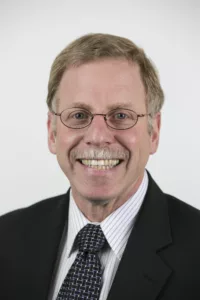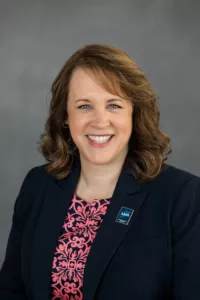How to Overcome Struggles in Family Medicine
Two Experts Share the Latest on PAs in Family Medicine
April 19, 2023
By Alex Morse
In an AAPA Huddle Ask Me session, two experts with years of experience in family medicine answered questions on increasing the number of PAs in the field, the benefits of getting involved in the community, and how to negotiate for better conditions for PAs and their patients.

Jeffrey A. Katz, PA-C, DFAAPA, has spent the last 27 years practicing family medicine in a rural health clinic in Taylorsville, North Carolina. In recent years, he is a past-president of AAPA, and has served as chairman of AAPA’s Full Practice Authority Task Force and on the AAPA Board of Directors. Prior to that, he was twice President of the North Carolina Academy of PAs (NCAPA) and served in various leadership roles on the NCAPA Board of Directors.
[Grow your network, find a mentor, and more – join or renew your membership today]
Leslie Clayton, DMSc, PA-C, DFAAPA, is currently serving her fourth term on the AAPA Board of Directors and is the Program Director for Advanced Practice with M Health Fairview in Minneapolis. She has practiced in family medicine for the majority of her 25 years as a PA, and has served as a provider lead for multiple primary care clinics. She also served as the lead advocate and writer of the PA Practice Modernization Act, which removed supervision and delegation of scope of practice from PA practice regulations in the state of Minnesota.
Both Katz and Clayton hold faculty positions at Wake Forest University and Saint Catherine University, respectively.
How to Encourage Other PAs to Join Family Medicine
Clayton insists that, despite family medicine often being considered the least exciting field to enter, it is the opposite. “It is as unique a practice specialty as cardiology or surgery,” she says. “We are experts in preventative care, chronic disease management, management and integration of total care of the patient.”

There are several ways to spread the word and get more PAs interested in family medicine. Firstly, become a preceptor. There is nothing better than first-hand experience, and taking a PA student on clinical rotations can be a great way to give insight into the patient lives touched every day. And it’s fun. It is a chance for the students to learn from seasoned professionals and for patients to receive extra attention during their visit.
Another option is to guest lecture at a PA program, a college Pre-PA society, or even a high school. Speaking to students is an opportunity to share how extensive family medicine is and the meaningfulness of providing care to entire families. And, finally, continue to provide excellent care to patients. In Clayton’s years of practice, she has had patients inspired to become PAs and practice family medicine as the result of the care she was able to provide.
Get Involved in the Family Medicine Community
There are several ways for family medicine PAs to get involved. Consider helping PA Katz reinvigorate the Society of PAs in Family Medicine, attend AAPA’s We Are Family (Medicine) conference, or join your state chapter.
Katz has been working to reestablish the family medicine PA specialty group, but bringing awareness has been challenging. Joining in the leadership of the Society of PAs in Family Medicine could help to reestablish that community, and provide rewards for leadership development and networking. AAPA’s We Are Family (Medicine) conference also provides networking and learning opportunities, and is ideal for all experience levels, offering a diverse range of topics and CME opportunities.
Clayton believes having family medicine PAs involved in state-level advocacy is also imperative to ensuring that any legislative efforts to strengthen primary care include PAs. “Consider attending a board meeting at the state level to learn what advocacy help is needed, perhaps joining a committee to learn more about how small efforts can have big impact, attend your state’s day on the hill to share your story with legislators about all the work you do in primary care as a PA,” she says. Also important, Clayton says, is PA involvement in their communities, not just for their personal and professional improvement, but to advance the PA profession.
Negotiating for Admin Time, Reduced Patient Load, and Longer Visits
Amid workforce shortages, it can be difficult to devote enough time and resources to patients while also resisting burnout. There is no easy answer, but some ways to find balance are through standardization efforts on common tasks, assigning the right person to the appropriate task, and being aware of how you are paid, according to Clayton.
Beyond these tips, Clayton encourages all PAs to consider joining a process improvement committee. It’s beneficial for all organizations to have one. “While it seems like one more thing to do, it can have a great impact on how your days caring for patients can go and often times the outcomes are better for patient quality.” With their insights into patient care, PAs can offer suggestions on how to improve the efficiency and quality of care.
Read the full Ask Me session online and check out the family medicine section of AAPA’s Areas of Practice Guide.
Alex Morse is AAPA’s Communications Associate. She can be reached at [email protected].
You May Also Like
PA Ranks as #2 Best Healthcare Job by U.S. News & World Report
A Day in the Life of a Rheumatology PA
AAPA Announces New Cohort of Distinguished Fellows
Thank you for reading AAPA’s News Central
You have 2 articles left this month. Create a free account to read more stories, or become a member for more access to exclusive benefits! Already have an account? Log in.



